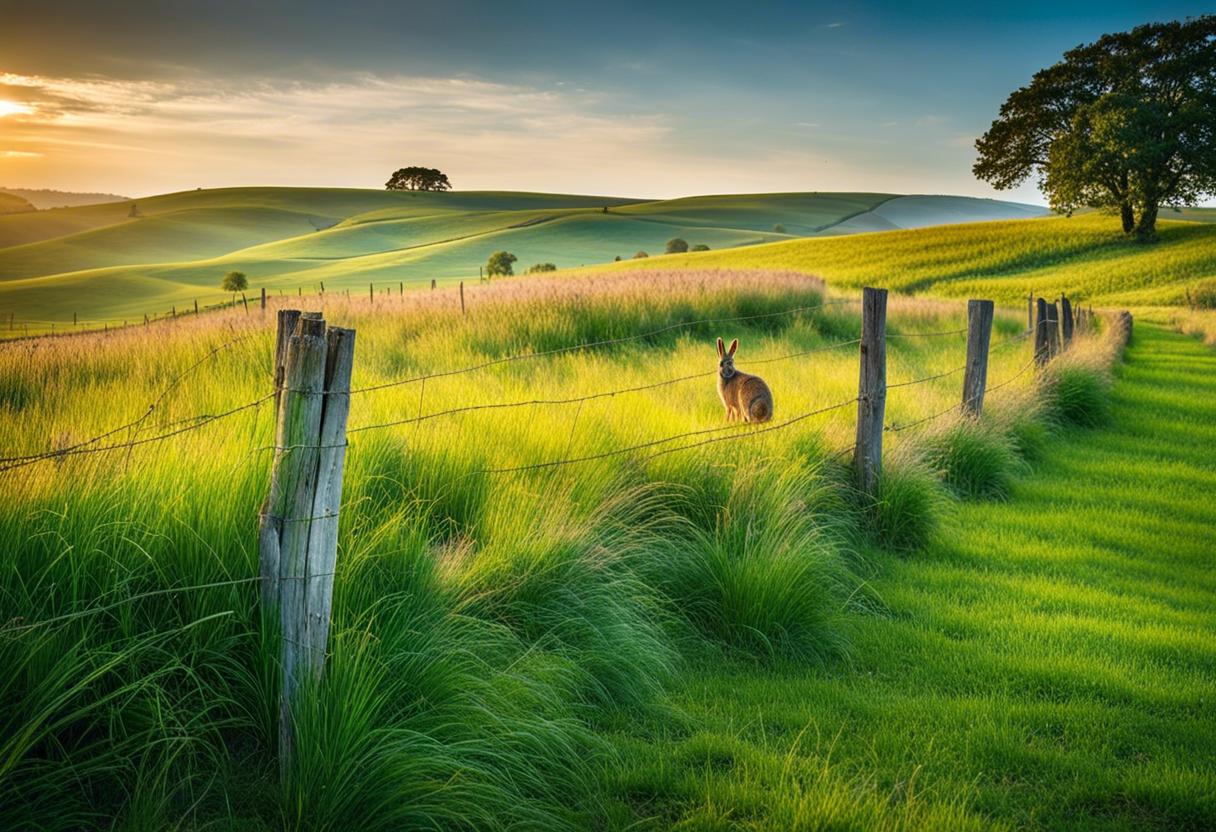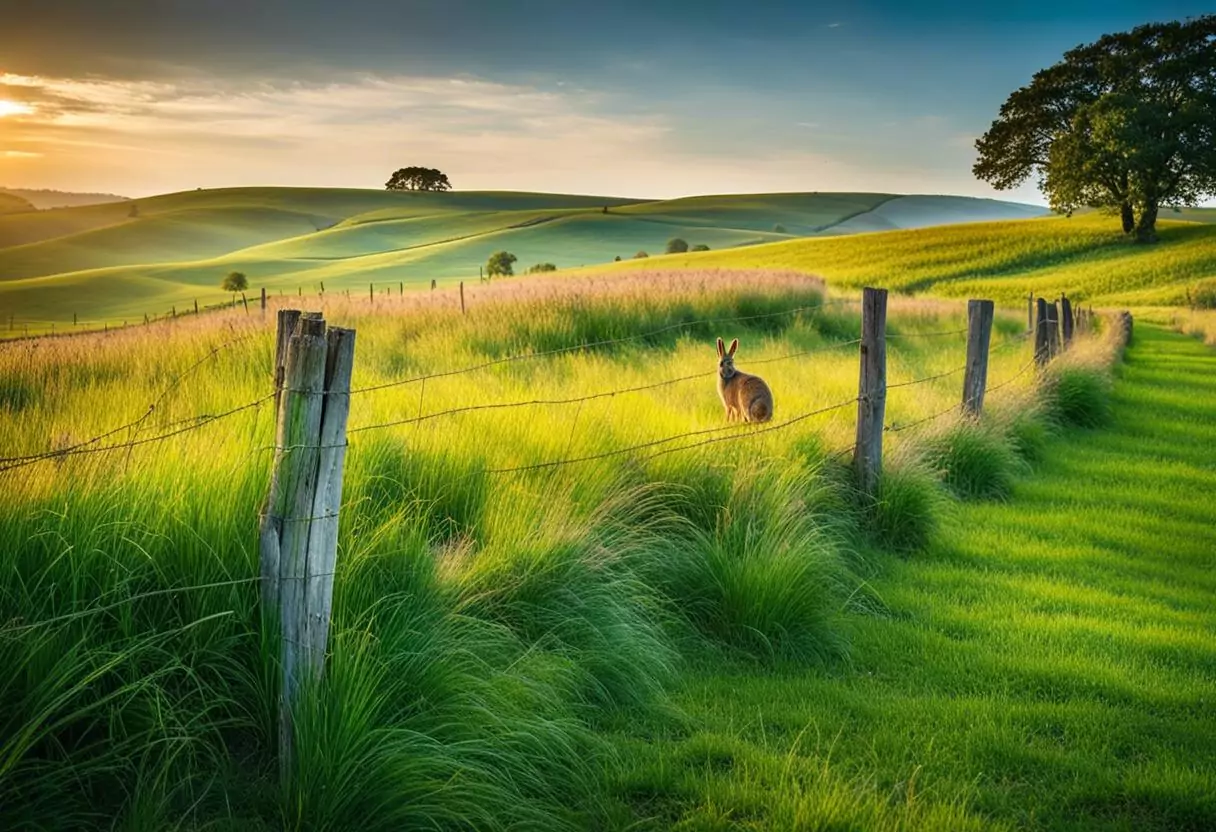

Despite the discouragement that can be felt due to the dwindling habitats and variety of flora, insects, and bird species across Ireland, Burrenbeo Trust, a charitable organisation dedicated to preserving the landscapes of Co Clare, provides a ray of hope through the Hare’s Corner initiative. This initiative serves to boost the diversity of natural species and environments.
In the last three years, what began as a test project aimed at farmers and landowners of Co Clare, the Hare’s Corner scheme has broadened to include additional areas such as Mayo, Galway, Meath, and Leitrim, offering expert assistance and resources for stakeholders to construct wildlife ponds, plant compact forests and orchards on their property.
Karen van Dorp, a technical officer in the field for Burrenbeo, states that the initiative seeks to provide accessible and uncomplicated ways to support farmers and landowners in their efforts to enhance biodiversity and fortify collective resilience against climate change impacts.
The phrase ‘hare’s corner’ has its roots in farming, referring to a difficult segment of a field which was left untouched by intensive farming and relinquished back to nature. The endeavour is supported by wetland experts, environmental scientists, foresters and indigenous orchard specialists, all contributing their expertise for these projects.
David Kerr, a dairy farmer from Ballyfin, Co Laois, is one of the participants who recently set up a wildlife pond on his property as part of the scheme. His intent to carry forward the legacy of his late father George, a passionate environmentalist, led him to be part of this project endorsed by Farming for Nature, a subsidiary initiative of Burrenbeo, which he represents as an ambassador.
In tribute to his father who passed during the height of the Covid pandemic in January 2021, David established a considerable wildlife pond which now draws migratory teal ducks, little grebes, and swans from the adjacent Ballyfin demesne. The surrounding area of the pond now boasts of mountain ash, Scot’s pine, and a game crop consisting of linseed, wheat, and kale to attract more birds.
“Although 12 per cent of the farm is non-commercially productive land, but I value it for its biodiversity and wildlife value,” says David Kerr.
Kerr pointed out that by fencing off land from livestock, nature is given the opportunity to take its course. Wildlife ponds have gained recognition as one of the most effective methods for attracting nature to agricultural lands. Yet, Kerr was experiencing issues with fish from the pond nestled atop a tributary of the Barrow River, due to their predation on frogspawn. To combat this, Kerr introduced three smaller ponds on the boundary of the enclosed land. Additionally, he anticipates that his recent undertaking, the “hare’s corner” pond situated at the margin of another inclined field, will encourage additional wildlife to that section of the farmland.
Different segments of the farm are interspersed with ash trees – currently being cut due to ash dieback – oak and Sitka spruce. Kerr recalls how the mentality half a century ago, when joining the EU, was to clear fields and reclaim land. However, the present mindset is different. Kerr’s father began planting trees, hedgerows, and designating wildlife corners in the 1980s, meaning roughly 12% of the farmland is now non-commercially productive. However, Kerr cherishes this land for its biodiversity and wildlife merits.
To Clive Bright, a Sligo beef farmer, a pond can resemble a campfire – it’s a spot one could gather around, gaze into or simply contemplate. Bright noted that having a pond on the farm can significantly enhance aesthetics and the overall quality of life. The once problematic, unprofitable wet corner of the farm can transform into a serene, maintenance-free area. Bright believes that in the midst of hectic farming operations, measures that disrupt the monotonous productivity of the landscape and create spaces for mental preservation are priceless.
Sharon Parr assists landowners of varying land sizes to formulate a “Plan for Nature”, as part of the Hare’s Corner scheme. She remarked that many individuals are often apprehensive about making mistakes. To address this, she provides advice on optimal tree planting to avoid destruction of other habitats. As per Parr, it’s about reframing expectations, identifying easy wins and helping landowners recognise what they already possess.
Maeve and Des Ryan, proprietors of land in Co Clare, had a consultative meeting with Parr to assist with decisions regarding their property. Parr suggested that they retain a perimeter of 1-1½m around the hedgerows in their hay field to foster a diverse range of vegetation. She brought to their attention previously unnoticed areas of natural value, identifying eight specific regions where minor yet attainable modifications could boost biodiversity, as Maeve recounts.
In an effort to effect these changes, the Ryans have taken to planting 200 saplings—varieties including Burren pine, hawthorn, oak, alder, hazel, birch, and spindle. Maeve described the Plan for Nature as an enlightening experience, which fosters increased awareness of one’s own land and its dwellings. Des remarked how you grow more conscious of the abundance of life in your environment as you gaze upon it, witnessing riveting details with each glance. The retired pair own nearly 10 hectares, with about half comprising of trees and the remaining land is used for housing a couple of horses.
On her west Clare property, Kate Meleady established a small forest, a body of water and a diminutive orchard with backing and financial support from the Hare’s Corner Initiative. When reflecting on moving there in 2020, she stated that they lacked comprehensive knowledge on biodiversity, thus relished in the opportunity to consult with specialists and aficionados on what would be beneficial. This expert advice gave them the confidence to make changes, assured that they were benefitting the land and inserting the correct type of vegetation to support Ireland’s domestic forests.
Since making these changes in 2020, she’s observed a significant growth in the bird population on her land, including species such as wild ducks, pheasants, and a variety of smaller birds. Focused on transforming the very damp land, she plans to construct two additional ponds in differing fields to attract more flora and fauna.
Féidhlim Harty, an expert environmental advisor, is associated with The Hare’s Corner project. He asserts the irresistible charm of creating ponds, with people eager to increase their number once they start. These ponds, even if they are not large or perpetually filled with water, provide excellent habitats for various wildlife and contribute to a beneficial biodiversity grid.
In the upcoming year of 2024, more than 600 new Hare’s Corners are planned to be integrated across Mayo, Galway, Leitrim and Meath by the Burrenbeo Trust. The Trust’s representative, Lee Worrell, emphasises that the only expectation they have from the individuals is to assume responsibility over these corners, nurturing their unique aspect of the Hare’s Corner.